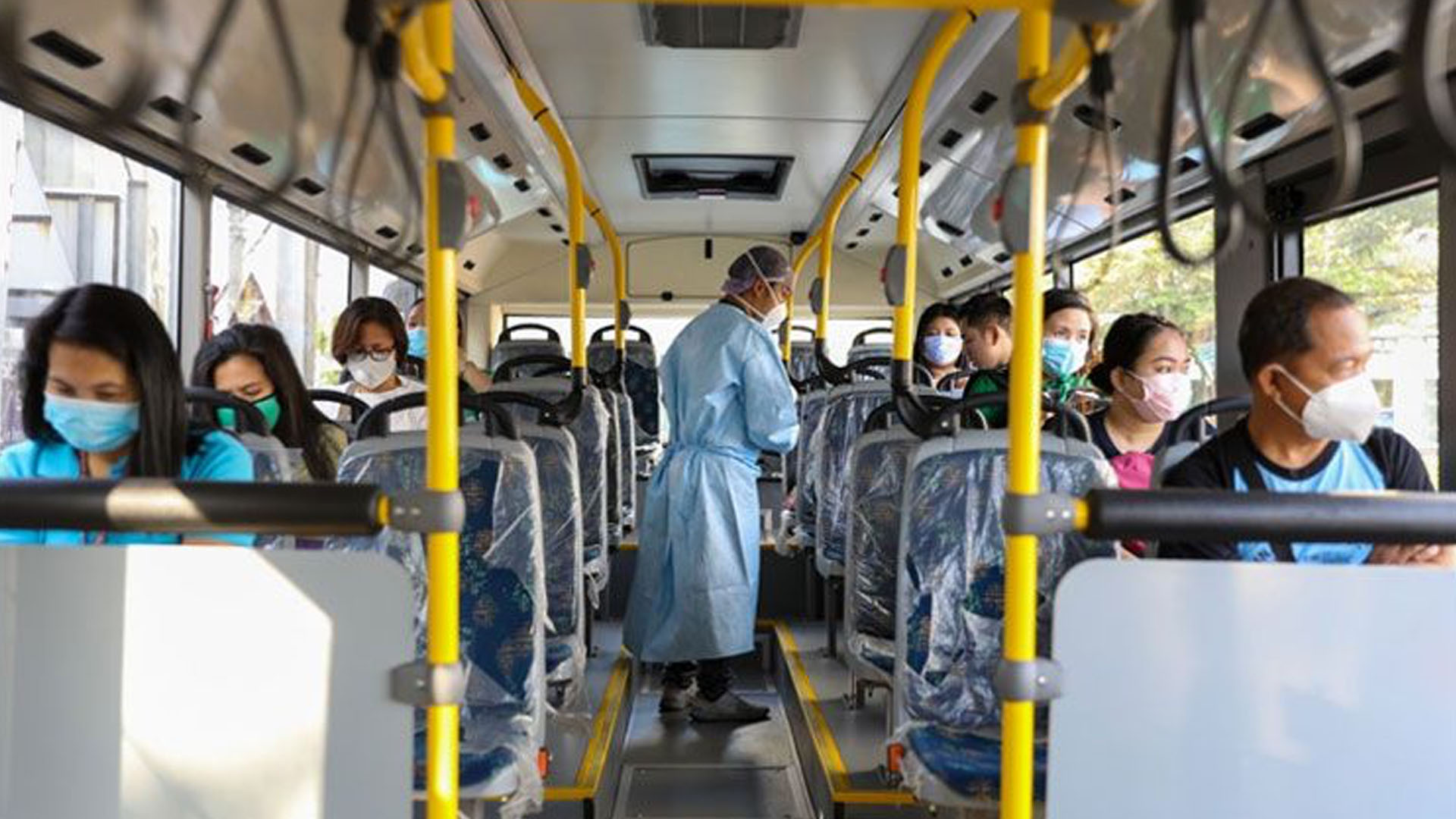Starting May 1, public transportation in moderate and low-risk areas under general community quarantine (GCQ) will resume operations at reduced capacity to ensure compliance with strict safety measures against COVID-19 transmission, according to the Department of Transportation (DOTr).
“Public transportation in the road sector will be available in areas declared under GCQ but we will strictly impose health safety standards at all times to ensure the safety of our drivers and passengers,” said DOTr Assistant Secretary for the Road Transport and Infrastructure Mark Richmund de Leon.
All permitted PUVs and transport terminals and operators must adhere to all three essential components dictated in the protocol/guidelines – Safety, Capacity and Coverage/Scope.
Safety refers to guidelines that reduce contact, transmission, and spread of the virus through the mandatory use of face masks and gloves for drivers. Thorough disinfecting practices of vehicles, terminals, and even among passengers are also required.
Capacity and passenger load factors will be required for each mode of transportation to ensure that physical distancing is followed. Passenger load for public utility buses (PUBs) and public utility jeepneys (PUJs) should not exceed 50 percent or half of the vehicle’s capacity, excluding driver and conductor. For UV Express and taxis, passenger load should not exceed two passengers per row, except for the driver’s row where only one passenger is allowed. Tricycles, on the other hand, must not exceed one passenger in the side-car, while backriding will not be allowed.
As for private vehicle owners, private cars and motorcycles will be allowed to operate for the purpose of essential travels as defined by the Inter-Agency Task Force (IATF). Cars will only be allowed one passenger to occupy the front passenger seat, while front-facing seats shall not exceed two passengers per row. Motorcycles are prohibited from having backride passengers. The use of bicycles and similar devices are also highly encouraged, and LGUs are also encouraged to identify bike-lanes, or bike-only roads.
According to Land Transportation Franchising and Regulatory Board (LTFRB) Chairman Martin Delgra III, the official guidelines state that the mode of PUV that will operate in each route in the GCQ areas will be guided by the number of passengers that will be transported.
“PUV modes with higher passenger capacity such as buses will be prioritized consistent with the Department Order No. 2017-011 or the Omnibus Guidelines on the Planning and Identification of Public Road Transportation Services and Franchise Issuance. In areas where buses are not enough to serve the actual passenger demand, or the road characteristics will not permit their operations, PUVMP compliant PUVs are the next priority. In areas with unavailable buses and modern PUVs, PUJs and UV Express may operate. In areas were no other mode of public transportation is available, tricycles may be permitted to operate as determined by the LTFRB in coordination with the corresponding LGU,” Chairman Delgra said.
The LTFRB has already finalized the mechanism for issuing of special permits to allow PUVs to operate. Drivers and operators may apply for the permit, free of charge, through LTFRB offices or by email through LTFRB’s online channels.
Transportation Assistant Secretary for Road Mark Steven Pastor said the guidelines are well thought of, and that it is aligned with the policies set by the IATF and DOH on social distancing.
“Social distancing protocols are our priority so we must prioritize vehicles that provide the least physical contact,” said ASec. Pastor.
“Modern buses and PUVs have bigger capacity and some are equipped with an Automatic Fare Collection System (AFCS) which prevent physical contact when paying fare so they are our priority choice to transport people in GCQ areas,” ASec. Pastor added.
Private vehicle owners, PUV drivers and operators, and private or public transport terminal operators who violate the guidelines will be sanctioned and penalized.
The LTFRB, Land Transportation Office (LTO), Inter-Agency Council on Traffic (I-ACT), and authorized personnel of the IATF against COVID-19 will conduct daily random inspections in terminals and depots to ensure strict compliance with the service, sanitary, and operational requirements of the guidelines.
“The DOTr is also calling for the help of enforcement agencies such as PNP and local government units (LGUs) to help ensure that social distancing and sanitation is observed in terminals and vehicles in these municipalities,” says ASec de Leon. “Let us all do our part to safeguard the health of all drivers and commuters in the transport sector.”
Meanwhile, any mode of public transportation in areas under the extended enhanced community quarantine (ECQ), including Metro Manila, are still prohibited.
Here’s are the guidelines on public transportation for areas under general community quarantine (GCQ):

Public Utility Buses (PUBs)


Shuttle Service

Public Utility Jeepneys (PUJs)

Taxis and Transport Network Vehicles (TNVs)

Tricycles








